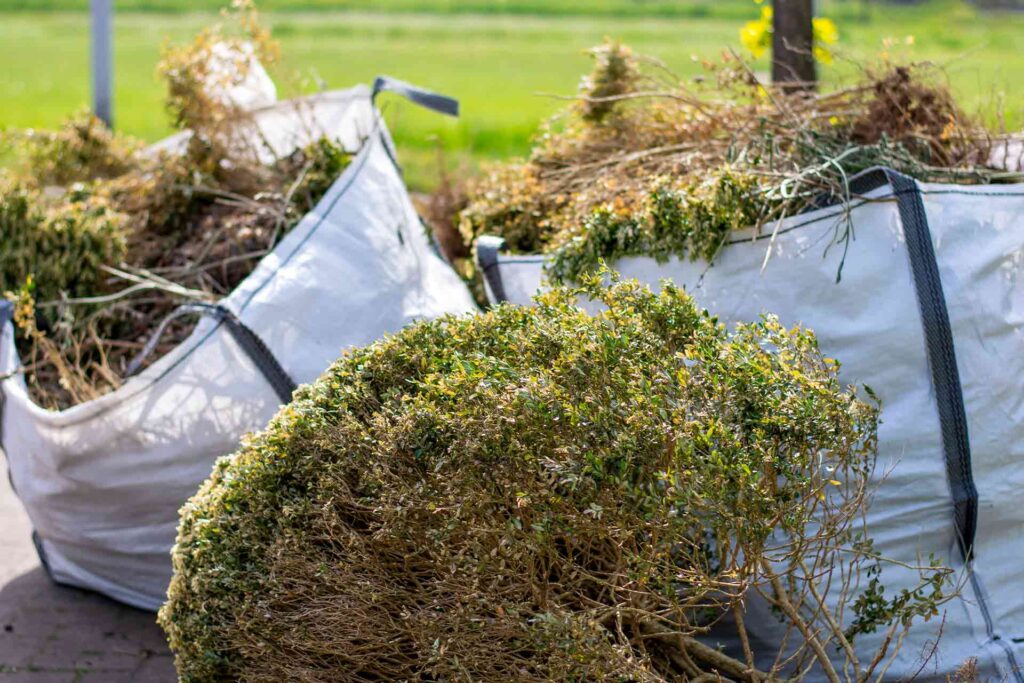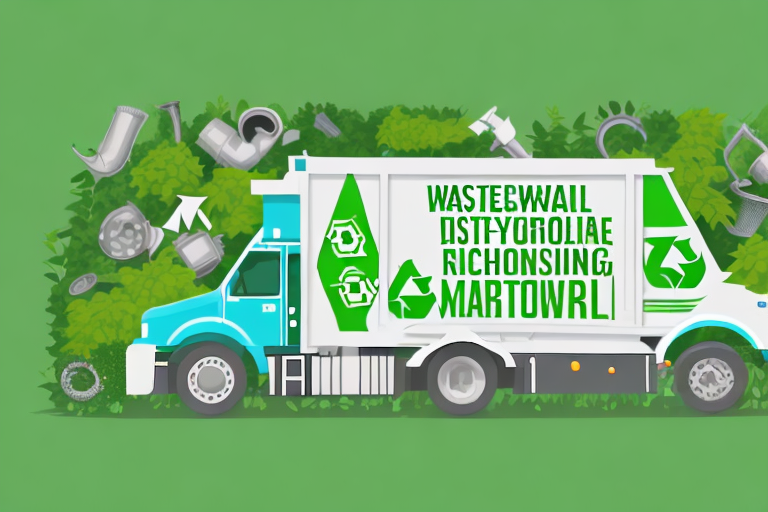With the increasing concern about environmental sustainability, the proper disposal of green waste has become a crucial issue worldwide. Green waste refers to biodegradable waste generated from various sources such as gardens, parks, and agriculture. In this article, we will delve into the importance of green waste disposal and how professional services play a vital role in tackling this challenge. Moreover, we will explore the evolution of green waste disposal methods, the challenges faced in managing green waste, and the future trends in this field.
Understanding Green Waste: Definition and Importance
Green waste encompasses organic matter that can be decomposed, including grass clippings, leaves, branches, and plant cuttings. One may wonder why the proper disposal of this waste is essential. The answer lies in its significant environmental impact.
When it comes to green waste removal Sydney, it’s not just about getting rid of unwanted materials. It’s about understanding the importance of responsible waste management and its positive effects on the environment. By delving deeper into the environmental impact of green waste, we can gain a better understanding of why its proper disposal is crucial.
The Environmental Impact of Green Waste
The improper disposal of green waste can have severe consequences for the environment. When left to decompose in landfills, this waste produces methane gas. Methane is a potent greenhouse gas that contributes to global warming. The release of methane into the atmosphere exacerbates climate change, leading to rising temperatures, melting ice caps, and extreme weather events.

Moreover, the decomposition process consumes oxygen, creating an imbalance in the ecosystem. As green waste breaks down, it competes with other organisms for oxygen, potentially leading to oxygen depletion in the surrounding environment. This depletion can harm aquatic life and disrupt the delicate balance of ecosystems.
But the environmental impact doesn’t stop there. The release of harmful chemicals and leachate from decomposing green waste can also contaminate soil and water bodies. These contaminants can seep into groundwater, affecting the quality of drinking water and posing risks to human health. Additionally, the contamination of soil can hinder plant growth and reduce agricultural productivity.
See Also: Convenient Options for Your Special Day by Wedding Flowers Online
The Role of Green Waste in Sustainable Development
On the other hand, properly managing green waste can contribute to sustainable development. By recycling and composting this waste, valuable nutrients can be returned to the soil, improving soil fertility. Composting green waste not only reduces the amount of waste sent to landfills but also provides a natural and nutrient-rich alternative to chemical fertilizers.
By adopting organic farming practices that utilize composted green waste, farmers can reduce their reliance on synthetic fertilizers. This, in turn, promotes healthier soil, minimizes chemical runoff into water bodies, and supports the growth of nutrient-rich crops. Organic farming also helps preserve biodiversity by avoiding the use of harmful pesticides and genetically modified organisms.
Furthermore, recycling green waste can decrease the demand for landfill space, conserving precious land resources. Landfills are not only eyesores but also take up vast areas of land that could be used for more sustainable purposes. By diverting green waste from landfills and utilizing it for composting or other recycling methods, we can optimize land use and preserve natural habitats.
In conclusion, understanding the definition and importance of green waste goes beyond the surface level. It involves recognizing the significant environmental impact of improper disposal and the potential benefits of responsible waste management. By taking proactive steps to recycle, compost, and reduce green waste, we can contribute to a healthier planet and a more sustainable future.
The Evolution of Green Waste Disposal Methods
The methods employed in green waste disposal have evolved over time as society has become more aware of the need for sustainable practices. Let’s explore the traditional techniques and the modern innovations that have revolutionized green waste management.
Traditional Methods of Green Waste Disposal
Traditionally, green waste was disposed of through practices such as open burning and landfilling. Open burning involved setting fire to piles of green waste, such as leaves, branches, and grass clippings, in open areas. While this method was convenient and cost-effective, it had severe environmental consequences. The burning of green waste released harmful gases, including carbon monoxide, nitrogen oxides, and volatile organic compounds, into the atmosphere. These pollutants contributed to air pollution and posed health risks to both humans and wildlife.
Landfilling was another common method of green waste disposal. Green waste, along with other types of waste, was dumped into landfills, where it would decompose over time. However, this process produced methane, a potent greenhouse gas that contributes to climate change. Landfills also posed risks of chemical contamination, as hazardous substances from various waste types could leach into the soil and groundwater.
Modern Innovations in Green Waste Disposal
Thankfully, modern innovations have introduced more sustainable methods for green waste disposal. Composting has gained popularity as an effective way to manage this waste. Instead of burning or burying green waste, composting involves the controlled decomposition of organic materials, such as food scraps, yard trimmings, and paper products. This process creates nutrient-rich compost that can be used to enrich soil in agriculture and landscaping. Composting not only reduces the amount of waste sent to landfills but also helps improve soil health and retain moisture, leading to more sustainable and productive land use.

In addition to composting, anaerobic digestion has emerged as another innovative solution for green waste disposal. This process involves the breakdown of organic waste in the absence of oxygen, resulting in the production of biogas and organic fertilizers. Biogas, primarily composed of methane and carbon dioxide, can be used as a renewable energy source for heating, electricity generation, or vehicle fuel. By capturing and utilizing the methane produced during anaerobic digestion, greenhouse gas emissions are significantly reduced. The remaining digestate, a nutrient-rich byproduct of the process, can be used as an organic fertilizer, further closing the loop on waste management.
Furthermore, advancements in technology have enabled the development of specialized machinery and equipment for efficient green waste processing. Shredders, chippers, and mulchers are now widely used to break down large pieces of green waste into smaller fragments, facilitating faster decomposition and composting. These machines not only save time and labor but also contribute to the overall effectiveness of green waste management.
As society continues to prioritize sustainability and environmental stewardship, the evolution of green waste disposal methods will likely continue. Ongoing research and innovation will lead to even more efficient and environmentally friendly solutions, ensuring that green waste is managed in a way that minimizes harm to the planet and maximizes its potential as a valuable resource.
Professional Services in Green Waste Management
Professional services play a crucial role in efficiently managing green waste. These services are equipped with the knowledge, resources, and infrastructure to handle large volumes of waste effectively.
When it comes to green waste disposal, professional waste management companies are at the forefront. They employ trained personnel who understand the complexities of green waste disposal and are well-versed in the regulations and best practices surrounding it. These professionals ensure that the waste is properly sorted and processed, minimizing the environmental impact and maximizing the potential for recycling and composting.
One of the key aspects of professional green waste management is the process involved. Upon collection, the waste is transported to specialized facilities where it undergoes a series of steps to ensure proper disposal and utilization. The first step is sorting, where non-biodegradable materials are separated from the organic matter. This meticulous sorting process ensures that each type of waste is directed to the appropriate destination.
Once the sorting is complete, the non-biodegradable materials are sent for proper disposal, following the guidelines set by environmental authorities. This ensures that these materials do not end up in landfills or other inappropriate locations, preventing further harm to the environment.
On the other hand, the organic matter that has been separated during the sorting process is diverted for composting or anaerobic digestion. Composting is a natural process where organic waste is decomposed by microorganisms, resulting in nutrient-rich compost that can be used to enrich soil and promote plant growth. Anaerobic digestion, on the other hand, involves the breakdown of organic waste in the absence of oxygen, producing biogas as a byproduct. This biogas can be used as a renewable energy source or converted into electricity.
The resulting compost or biogas from the composting or anaerobic digestion process can be sold or used for various applications. Compost can be used in agriculture, landscaping, and gardening, providing a sustainable alternative to chemical fertilizers. Biogas, on the other hand, can be used for heating, cooking, or generating electricity, reducing reliance on fossil fuels and contributing to a greener energy mix.
Overall, professional green waste management services play a vital role in ensuring that green waste is handled responsibly and sustainably. Their expertise, infrastructure, and commitment to environmental stewardship make them valuable partners in the journey towards a greener and more sustainable future.

Challenges and Solutions in Green Waste Disposal
While green waste management has made significant progress, various challenges continue to hinder its efficiency. Let’s explore some common obstacles and the innovative solutions that are transforming the industry.
Common Obstacles in Green Waste Management
A lack of awareness among the general public about green waste disposal practices remains a primary challenge. Additionally, limited infrastructure and funding can hinder the implementation of sustainable waste management systems. Moreover, the collection and transportation of green waste over long distances can be costly and energy-intensive.
Innovative Solutions for Green Waste Disposal
To address these challenges, innovative solutions have emerged in the field of green waste disposal. Public awareness campaigns and educational programs have been instrumental in promoting responsible waste management practices. Governments and organizations are also investing in the development of infrastructure to facilitate composting and anaerobic digestion on a large scale. Furthermore, the use of advanced technologies, such as GPS tracking systems for waste collection vehicles, helps streamline operations and reduce costs.
The Future of Green Waste Disposal
As we look ahead, several trends are shaping the future of green waste disposal. Advancements in technology and changing societal attitudes are revolutionizing the way we manage this waste.
Emerging Trends in Green Waste Management
One prominent trend is the focus on decentralized waste management systems. This approach involves establishing smaller-scale facilities closer to the source of waste generation, reducing the need for long-distance transportation. Additionally, the adoption of smart technologies, such as Internet of Things (IoT) sensors, can optimize waste collection routes and improve operational efficiency further.
The Role of Technology in Green Waste Disposal
Technology plays a significant role in enhancing green waste management processes. Advanced sorting techniques and machinery enable efficient separation of different waste streams, increasing recycling rates. Furthermore, innovations in bioenergy production from green waste offer the potential for energy self-sufficiency and a circular economy.
In conclusion, the proper disposal of green waste is paramount for a greener tomorrow. Professional services have emerged as key players in this domain, offering expertise and infrastructure for efficient waste management. With the evolution of sustainable disposal methods, innovative solutions for overcoming challenges, and the adoption of emerging technologies, we can pave the way towards a more environmentally friendly and sustainable future.

Leave a Reply